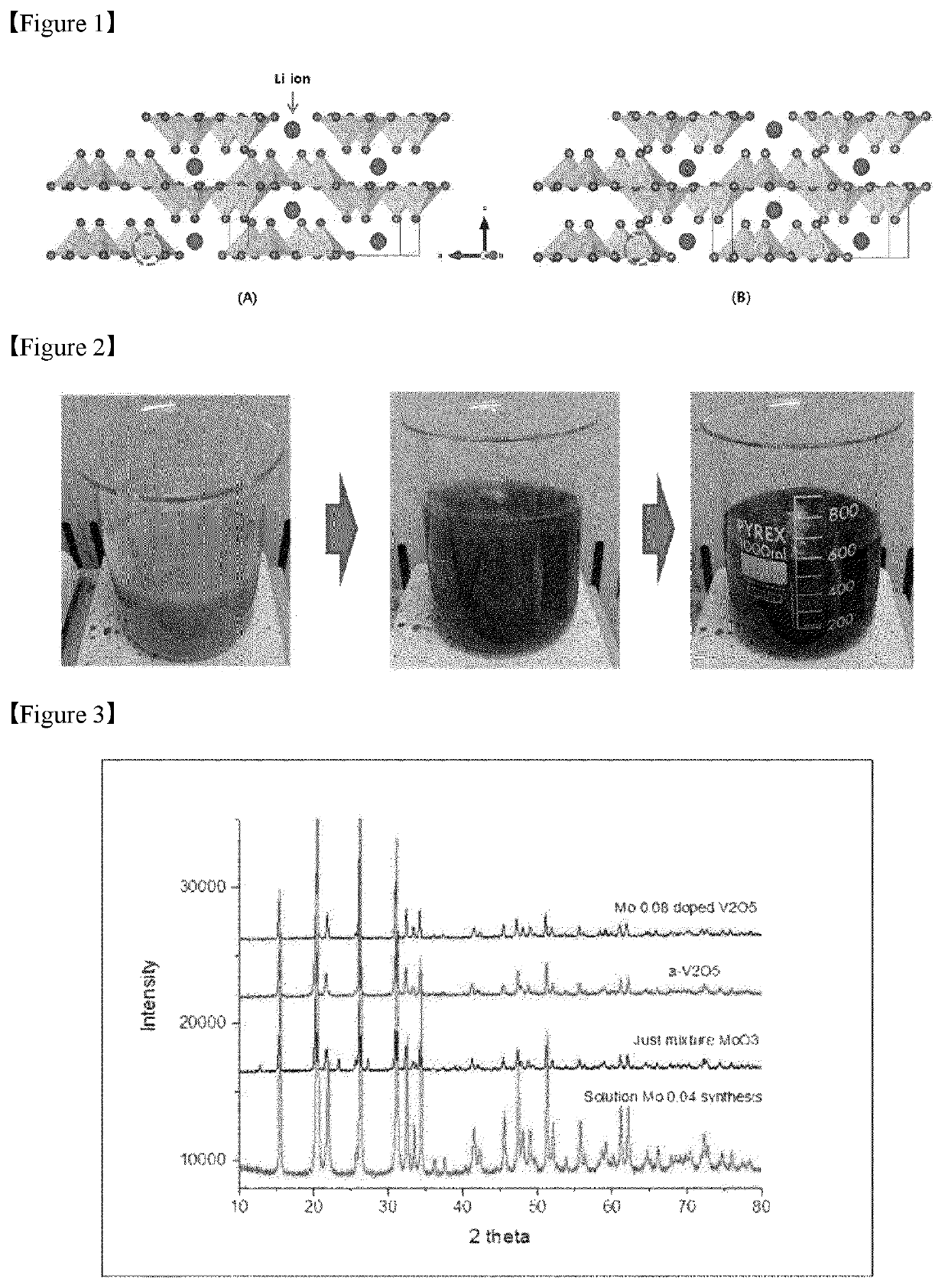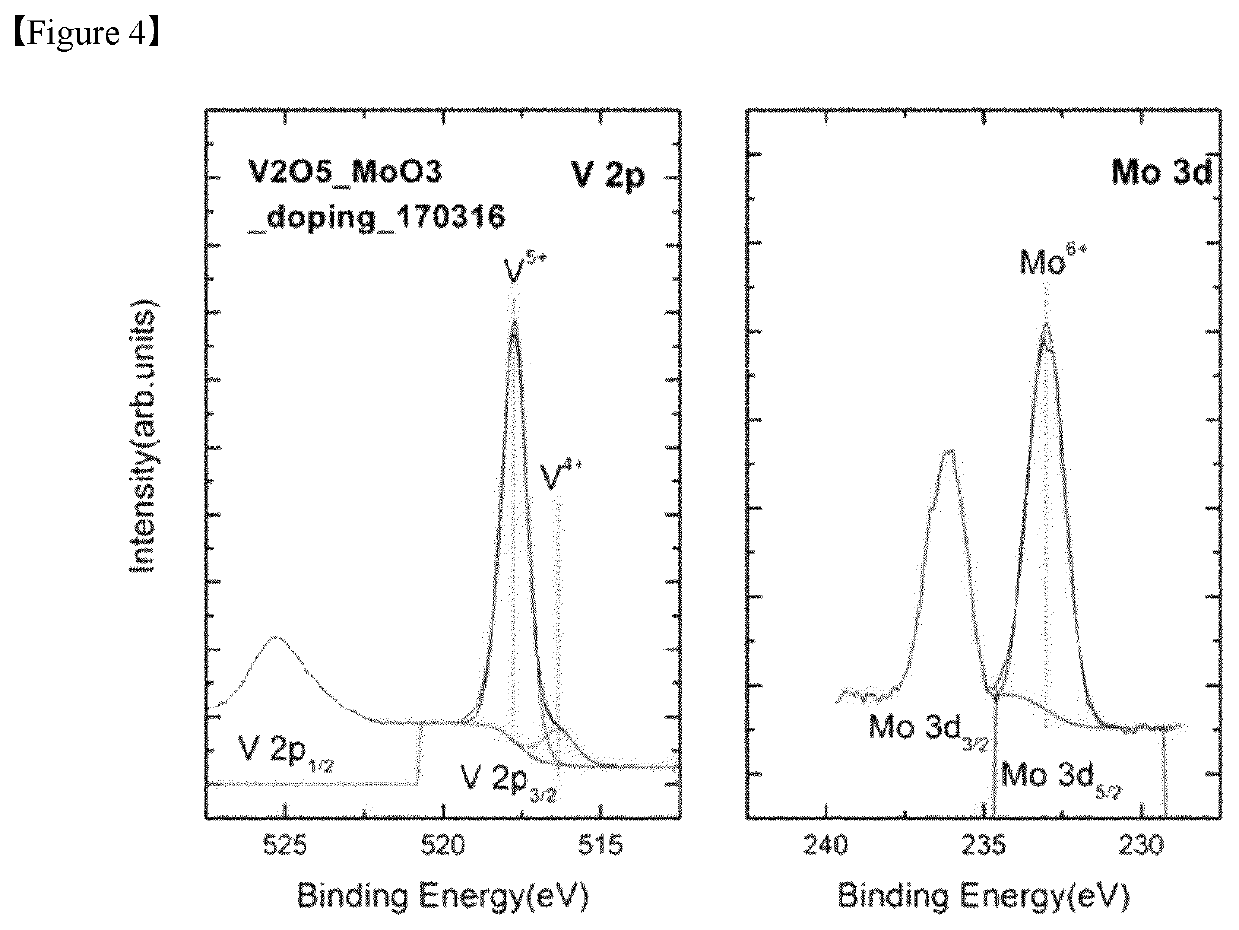Cathode material for lithium secondary battery, and preparation method therefor
- Summary
- Abstract
- Description
- Claims
- Application Information
AI Technical Summary
Benefits of technology
Problems solved by technology
Method used
Image
Examples
example 1
[0053]Manufacture of Positive Electrode Active Material
[0054]First of all, 0.3960 g of a water-soluble molybdenum-based compound ((NH4)6Mo7O24.4H2O), and 10 g of vanadium oxide (V2O5) was added to 500 mL of distilled water, and reacted at a temperature of 80° C. Thereafter, the reaction product was put into a heating furnace at 400° C., and thermally treated for 5.5 hours to manufacture a positive electrode active material including a vanadium oxide (V1.96Mo0.04O5) substituted with molybdenum.
[0055]Manufacture of Positive Electrode for Lithium Secondary Batteries
[0056]The manufactured positive electrode active material, a binder including polyvinylidene fluoride (PVdF), and a conductive material including Super P were mixed at a weight ratio of 8:1:1 to manufacture a positive electrode material. Thereafter, the positive electrode material was dispersed in an NMP solvent, and an aluminum current collector was coated with the positive electrode material to a thickness of approximately...
example 2
[0059]A positive electrode active material, a positive electrode, and a coin cell (a lithium secondary battery) were sequentially manufactured in the same manner as in Example 1, except that, in addition to 0.3960 g of the water-soluble molybdenum-based compound ((NH4)6Mo7O24.4H2O) and 10 g of the vanadium oxide (V2O5), 14.03 g of oxalic acid was further added to 500 mL of distilled water.
experimental example 1
of Positive Electrode Active Raw Material
[0063]FIG. 2 is an image for illustrating the solubility and color change of the positive electrode active material with time according to one exemplary embodiment of the present invention. Specifically, this is related to the positive electrode active material manufactured in Example 1. As shown in FIG. 2, it can be seen that the vanadium oxide was properly reacted with the molybdenum-based compound.
PUM
 Login to View More
Login to View More Abstract
Description
Claims
Application Information
 Login to View More
Login to View More - Generate Ideas
- Intellectual Property
- Life Sciences
- Materials
- Tech Scout
- Unparalleled Data Quality
- Higher Quality Content
- 60% Fewer Hallucinations
Browse by: Latest US Patents, China's latest patents, Technical Efficacy Thesaurus, Application Domain, Technology Topic, Popular Technical Reports.
© 2025 PatSnap. All rights reserved.Legal|Privacy policy|Modern Slavery Act Transparency Statement|Sitemap|About US| Contact US: help@patsnap.com


